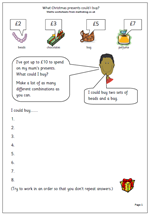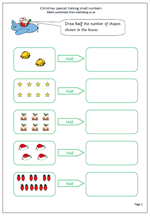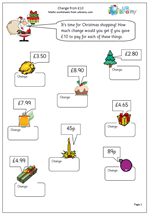 This is the first in a new series looking at SAT papers, the questions, answers and best methods of going about them. This term I am looking at the 2011 Paper B. Calculators are allowed for this paper, but generally I think that paper B tends to be harder than Paper A.
This is the first in a new series looking at SAT papers, the questions, answers and best methods of going about them. This term I am looking at the 2011 Paper B. Calculators are allowed for this paper, but generally I think that paper B tends to be harder than Paper A.
The first question has 5 numbers and asks which is the nearest to 100.
1. The number 111 should be circled.
One mark for this question.
Other clear indications of the answer, such as underlining or ticking will also gain the mark.
Suggested method:
This is probably best done by a process of elimination.
909 can immediately be crossed off as it is so far from 100.
This leaves 70 and 85 below 100
and 111 and 120 above 100.
Immediately it can be seen that 85 is nearer to 100 than 70 and that 111 is nearer than 120.
So that leaves 85 and 111.
85 is 15 away from 100. 111 is 11 away from 100 so the answer must be 111.
2. 10 + 30 = 40
20 + 30 = 50
One mark for this question.
Calculations may be given in either order.
The first two numbers within each calculation may be given in either order.
Suggested method:
A quick glance at the numbers on the cards will suggest that the answer cards are likely to have the two highest numbers in them. That’s 40 and 50.
50 can be made from 30 and 20. This leaves 30 and 10 to make 40.
A calculator is not really of any help with these two questions.
Question 1 and 2 answers and suggested method 2011 Paper B







